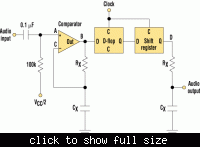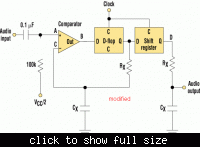userx2
Full Member level 3

Hello
Please let me know if this is the wrong forum for this question.
Can someone please explain to me (I am a complete novice in digital signalling and Sigma Delta converters), how to convert the PCM bitstream output from my converter to a conventional binary integer?
Someone mentioned to me the use of a counter but I am struggling to see how that can work.
I have seen all the mathematics but a simple explanation on "how to" would suit me a lot better.
At this stage, I want to convert / sample the output of a potentiometer.
I am using a D-FlipFlop with a comparator and RC circuit to produce the bitstream and I need to have the output as either 8 or 10 or 16bit values representing the level.
Best regards
2X
Please let me know if this is the wrong forum for this question.
Can someone please explain to me (I am a complete novice in digital signalling and Sigma Delta converters), how to convert the PCM bitstream output from my converter to a conventional binary integer?
Someone mentioned to me the use of a counter but I am struggling to see how that can work.
I have seen all the mathematics but a simple explanation on "how to" would suit me a lot better.
At this stage, I want to convert / sample the output of a potentiometer.
I am using a D-FlipFlop with a comparator and RC circuit to produce the bitstream and I need to have the output as either 8 or 10 or 16bit values representing the level.
Best regards
2X



